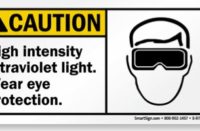
Bonding primers serve two purposes when applied to concrete before topcoating, according to Victor Pachade, national sales manager for Smart Surface Technology, manufacturer of Colormaker products. “They seal the concrete surface and develop a bond line for a coating or topping to bond to the substrate.”
Concrete isn’t usually a good substrate for holding coatings because of its high porosity and alkalinity. “Without it (bonding primer), there’s nothing for the coating to grab onto,” says Pachade. If the concrete substrate is not primed, “You’ll see pinholes because the concrete is breathing.”
You will have even more problems if you’re topcoating over old concrete. The substrate might well be dry and crumbly, causing the surface to flake and take the new coat with it.
The solution is a layer of bonding primer that provides benefits during both the liquid phase and the solid phase of the application. In addition to sealing a porous substrate and adhering to the topping, primers increase the wettability of the topcoat, making it easier to spread.
“This increases the working time,” says Bob Harris of the Decorative Concrete Institute in Temple, Ga.
At the same time, it decreases the risk of a fisheye effect brought on by partial adherence of the topcoat, says Pachade. “Without it, your topcoat will come up in three months.”

Where, when and how
To Harris, it’s easy to determine when to use a bonding primer: when the manufacturer specifies it. It’s also necessary to use a bonding agent when the surface will be subjected to extreme temperature conditions or in conjunction with a self-leveling or semi-self-leveling surface, he says.
Also, use a bonding primer whenever topcoating concrete, says Pachade.
You’ll find bonding primers in acrylic, epoxy and polyurethane composition. Often, acrylic primers are used before applying a urethane topcoat. “Urethanes don’t like the alkalinity of the concrete, so they repel it,” says Pachade.
It’s also wise to go with an acrylic primer when applying it to an exterior surface. “Most epoxies tend to yellow outdoors, and urethanes can be very slippery,” says Pachade.
Regardless of which primer you’re using, be sure to thoroughly wash your surface before applying.
If your primer is re-emulsifiable, it must be completely dry to the touch before applying your topcoat. If it’s not re-emulsifiable, the topcoat is usually applied while your primer is still wet.
It generally takes two coats to do the job, and you’ll get 200 square feet to 300 square feet of coverage per gallon. “You can use a sprayer with an acrylic primer, but roll or brush with a urethane or epoxy,” says Pachade.
One final piece of advice from Harris: All bonding primers are not the same. “Be sure to take that into consideration as you prepare your estimate, because the drying time will vary.”
Questions from Readers
Question
I have a covered concrete porch that had a Rustoleum “Stone Effects” finish rolled on top. It was installed over 16 years ago but some areas were blistering due to water getting underneath, I think. I’ve scraped the entire surface and can see that the concrete, which was poured probably 60 years ago, is very, very smooth, almost glossy, and the aggregate is very small. I dropped some water on the surface to see how quickly it would absorb and noticed that it did not. It basically puddled on top and remained there.
Now that I have removed the old finish it is very unsightly. I want to use the same product but in a darker shade, however I am concerned that I will have the same issues. I live in Canada and we have -30 degree temps in winter and 80+ in the summer.
It was suggested that I grind the surface now and clean with soap and/or TSP and then directly roll on the product. I looked on the label and the manufacturer recommends as an “option” to use Zinsser Bonding Primer. I called Rustoleum and it seems that the primer is not sold in Canada anymore and their reply was simply not to use the Stone Effect product. It seems that at this point I have very few choices so renting a hand grinder to rough up the surface to prep seems to make sense in order to give the concrete a “tooth.”
Would you suggest this and do you have any other suggestions I may use? I do not feel educated enough to choose a type of bonding primer either.
Answer from Concrete Decor
We appreciate you bringing your concerns to our attention.
There are a number of good solutions that would do well in place of the Rustoleum product.
First and foremost, you need to remove ALL the existing coating. You can accomplish that with a hand-held grinder outfitted with a 7″ cup-wheel. Just be careful not to gouge your concrete surface. Make sure you’re holding the grinder flat on the surface and that it’s always in motion, not holding it in one place. We don’t currently sell those products in the Concrete Decor Store but you can find these kinds of abrasives at your local big box hardware store.
Once your surface is clean, we recommend using Surface Gel Tek’s (gelled acid) which is completely safe to touch and 100 percent biodegradable (will not contaminate soil or hurt plants). This product properly etches the concrete surface, creating an acceptable profile for the adhesion of your new coating.
We will continue to do some investigation for you on a comparable product for Stone Effects and be in touch. Thank you again for your question. We look forward to helping you find success with your project.












